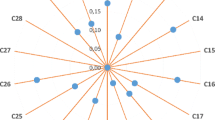Abstract
One of the most important parts of the simulator exercise is the evaluation of the students’ results by the instructor both during and after the training session. This should be performed in two ways: first, during the exercise run to ensure that the training objective can be achieved and second after exercise completion in order to give the students an indication of their performance during the simulation run. For these purposes software tools have been created and implemented at the Maritime Simulation Centre in Warnemünde: the “Surveillance Tool”, allows for a monitoring during the run and the “Evaluation Tool” will enable a detailed evaluation by the instructor after the run. It allows for in-depth search within the replay data and at the same time facilitates the calculation of the final score for the student’s performance based on measurement factors as penalties for exceeding quality limits. Within this paper a brief overview of the principles of these methods is high-lighted and selected examples of applications are described.
Similar content being viewed by others
References
Benedict, K.:Integrated Operation of Bridge-, Engine Room- and VTS-Simulators in the Maritime Simulation Centre Warnemünde. In:Proceedings of Conference on Simulation CAORF/ JSACC 2000, New York, 3–7 July 2000.New York: CAORF/JSACC, 2000.
Benedict, K., Baldauf, M., Böcker, Th., Felsenstein, C., Herzig, M.:Computer-based evaluation of ship handling simulator exercise results. San Francisco, USA: INSLC, 2002.
Hilgert, H., Baldauf, M.:A common risk model for the assessment of encounter situations onboard ships. In:Maritime Collision and Prevention. Surrey, England: Chiavari Publishing, 1996.
Benedict, K.; Hilgert, H.:Optimising man-overboard manoeuvres. In:Proceedings of the 15th Conference of Bulgarian Ship Hydrodynamic Centre (BSHC). Varna: BSHC, 1986. OrRückführung des Schiffes bei Mann-über-Bord-Unfällen. Part 1.Hamburg: HANSA, 1986.
Hahne, J., Tober, H., Brühe, B.:Rettung aus Seenot. Erfurt: Deutscher Kommunal-Verlag, 1987.
Author information
Authors and Affiliations
Rights and permissions
About this article
Cite this article
Benedict, K., Baldauf, M., Felsenstein, C. et al. Computer-based support for the evaluation of ship handling exercise results. WMU J Marit Affairs 5, 17–35 (2006). https://doi.org/10.1007/BF03195079
Issue Date:
DOI: https://doi.org/10.1007/BF03195079




